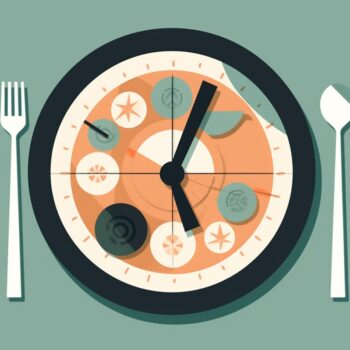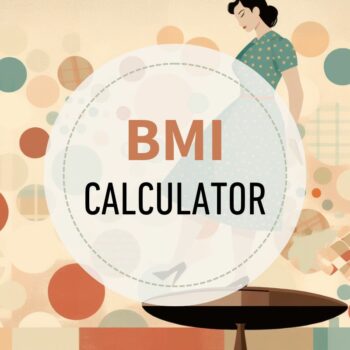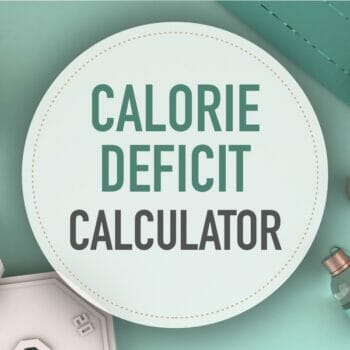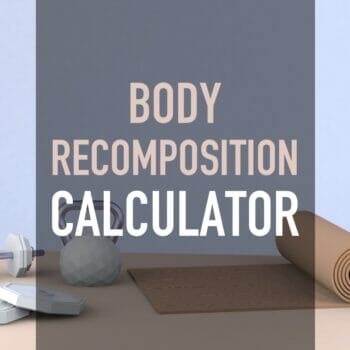Macro Calculator
This free, easy-to-use macro calculator gives you your optimal macronutrients and calories. It’s a weight loss or muscle gain calculator for both women and men.
Combine with macro counting or flexible dieting to reach your goals faster.
How to get leaner and stronger?
Our comprehensive macro-based fat loss program shows you how. Learn more
How do macros work?
The foods we eat are made up of three macros (macronutrients). These are carbohydrates (carbs), protein, and fat.
Chicken is high in protein but has no carbs; rice is high in carbs but has very little fat or protein. The three macronutrients provide the body with energy and raw materials for growth and repair.
By calculating the appropriate daily calorie amount for you, we can then break this down into the best macronutrient ratios to achieve weight loss.
Basic steps for macro counting
- Enter details into the calculator
Make sure to choose the correct goal. - Take note of your calories and macros
These will be the targets you are aiming for each day. - Track your macros
Use an app or pre-plan your meals. - Measure results
Don’t use basic weight scales.
Use proper body composition scales (we recommend Renpho) to measure fat and muscle mass changes.
What is a good macro ratio for fat loss or muscle gain?
Your macros should be based on your Total Daily Energy Expenditure (TDEE) and goals.
The calculator defaults to the best macro ratio proven to work for most people.
This ratio is:
- 30% fat
- Protein is 0.65 grams per pound of body weight,
- The remainder is carbs.
Depending on your goal, this will be either a calorie deficit or a surplus.
You can go further and make more adjustments: Perhaps you’re an extreme endomorph and do better with fewer carbs. Or perhaps you have one kidney and need to eat less protein.
You can fine-tune your results with a bit of math. See how to change your macros here.
What is a good protein ratio?
Rather than a percentage, proteins are based on your body weight. Our calculator has three settings:
- Moderate adjusts the ratio to 0.65 grams per pound of body weight.
This is appropriate for sedentary individuals or people with higher body fat percentages. - High is for active people with moderate strength training and an average body fat percentage.
- Maximum will set the ratio to 1 gram per pound.
This amount is good for bodybuilding and gaining muscle mass. You must be doing intense training.
Find out how to fine-tune your protein ratios when counting macros
Fat macro ratio
Set fat at 30% of daily energy expenditure.
Most people do very well with this amount of fat. See more about choosing the best macro fats. Because of high-fat diets like keto, many people are now eating more fat than they need to.
Carbohydrate macro ratio
Once you’ve calculated protein and fat, the remainder of your daily calories should be from carbohydrates.
Carbs fuel your body and workouts – and are the body’s preferred energy source.
If you are coming from a low-carb background, this may seem high. However, according to respected nutritional research, this is a moderate amount of carbs.
If you are eating according to your TDEE, the notion that carbs cause weight gain or stop fat loss is incorrect.
Using as a Calorie Deficit Calculator
As a weight loss calculator, this tool establishes a safe calorie deficit only.
The Lose option puts you in a 20% calorie deficit, promoting safe, steady weight loss.
The best macro ratio for body recomposition
If you want to recompose your body (lose fat and gain muscle simultaneously), then use the body recomposition calculator.
Macro ratio for maintenance
The Maintain button shows you the macro levels to maintain your current weight.
This is great if you have lost weight and don’t want to gain it back.
Macro ratio for muscle gain
The Gain button puts you in a 20% calorie surplus.
The macro breakdown is designed to build muscle fast in conjunction and must be combined with a comprehensive weight training program.
Underweight people can also use it.
TIP: Try starting with the maintenance goal and gradually increasing calories if you want lean muscle gains.
Calculating macros using your body fat percentage
The calculator uses your body weight to determine calories and macros.
However, you can obtain superior results by using your body fat percentage. The calculator allows you to choose which method: Normal for body weight, Lean Mass for fat percentage.
When to choose the Lean Mass Formula
If you are lean (have a low body fat percentage), choose the Lean Mass formula and enter your body fat %.
If you are classified as obese and have a lot of weight to lose, the lean mass formula is superior. You can read more about macro counting and obesity.
Help? Calculate your ideal body weight or get an assessment of your body fat percentage.
Why the difference? Muscle cells burn more calories than fat cells, so the more accurately we measure this, the better your results will be.
How to calculate macros per meal
You can break this down into meals once you’ve calculated your daily macros in the calculator.
Choose from 2 to 6 meals daily to see the macro ratio you can track for each meal. For some people, this is easier, but for others, this is too much detail.
Do what works for you.
Meal Plans
See a 5-day macro-based meal plan. It includes three meals and two snacks per day.
Macro calculator activity level settings
A higher activity level means a higher daily calorie goal.
For example – if you maintain your weight at 2,000 calories per day, adding vigorous daily exercise means you need more calories to maintain your weight.
If you are sedentary and trying to lose weight, adding exercise will increase your daily calorie goal.
The idea seems counter-intuitive, but more energy is required to fuel your workouts. More workouts lead to increasing metabolism; therefore, more fat is burned!
Undereating is one of the leading causes of the weight loss plateau.
So many of our clients previously “hit the wall” with dieting. They would continually reduce calories, stop losing fat, and gain weight when they eat a little more.
Macro counting defeats this by prescribing the right food and calorie levels.
Which activity level do I choose?
- Sedentary: Just regular everyday activity like a bit of walking, a couple of flights of stairs, eating, etc.
- Light: Any activity that burns 200-400 calories (females) or 250-500 calories (males) over your sedentary amount.
- Moderate: Any activity that burns 400-650 calories (females) or 500-800 calories (males) more than your sedentary amount.
- Extreme: Any activity that burns more than 650 calories (females) or more than 800 calories (males) in addition to your sedentary amount.
Other options for determining your calorie burn
- Use our calories burned calculator – it accurately assesses over 380 activities.
- Use a fitness tracker – like a Fitbit or Apple Watch (note that they can overestimate calorie burn).
- Use a suitable app – like MapMyFitness
Why should I eat more when I exercise more?
High physical activity not fueled with enough calories will lead to muscle catabolism (breakdown of muscle fiber).
This lack of nutrition could stall your weight loss, so eat up if you love to exercise!
I’ve got my macros – now what?
Once you’ve identified your target daily macros, you must determine the macros in all your foods.
By tracking them daily, you can reach your recommended macro targets that encourage fat loss, muscle gain, or whatever your goal may be.
You can learn more about the macro counting system and the flexible dieting philosophy. Many people use an app like Myfitnesspal to track macros.
For more specifics on what to eat – see a sample macro meal plan or a list of macros for familiar foods.
View article sourcesSources
- Mifflin, M. D., St Jeor, S. T., Hill, L. A., Scott, B. J., Daugherty, S. A., & Koh, Y. O. (1990). A new predictive equation for resting energy expenditure in healthy individuals. The American Journal of Clinical Nutrition, 51 (2), 241-247. Link
- McArdle, W. D., Katch, F. I., & Katch, V. L. (2010). Exercise physiology: nutrition, energy, and human performance. Lippincott Williams & Wilkins. Link
- Jequier, E. (1994). Carbohydrates as a source of energy. The American journal of clinical nutrition, 59(3), 682S-685S.
- Lemon, P. W., Tarnopolsky, M. A., MacDougall, J. D., & Atkinson, S. A. (1992). Protein requirements and muscle mass/strength changes during intensive training in novice bodybuilders. Journal of Applied Physiology, 73(2), 767-775. study abstract link
- Grundy, S. M. (1999). The optimal ratio of fat-to-carbohydrate in the diet. Annual review of nutrition, 19(1), 325-341. abstract
- Conlin, L.A., Aguilar, D.T., Rogers, G.E. et al. Flexible vs. rigid dieting in resistance-trained individuals seeking to optimize their physiques: A randomized controlled trial. J Int Soc Sports Nutr 18, 52 (2021). https://doi.org/10.1186/s12970-021-00452-2
2,104 Comments


 Menopause Macro Calculator
Menopause Macro Calculator Intermittent Fasting Calculator
Intermittent Fasting Calculator BMI Calculator
BMI Calculator Calorie Deficit Calculator
Calorie Deficit Calculator Body Recomposition Calculator
Body Recomposition Calculator
Hi Ted, what body fat percentage is low enough to use the lean mass calculator? I just had mine tested and it was 21.5% and I would like to be at 19%. I currently lift 2-3 days (powerlift), CrossFit 2-3 times and run 3-8miles a week. Would you consider this light activity or moderate? I hired a company that calculated my macros in the past and they kept my numbers so low (130p/33f/140c for 135-140lbs and 67inches) that I think it was unhealthy and I ended up hungry, weak, and I gained weight after. Should I use high protein or normal?
Thank you!!! Your site is very helpful!
Hi Anna, Glad you find our site useful. The lean mass formula is best for women under 20% BF so you’re almost there. It seems like you are moderate but if you have days where you CF and run it could even bump you to very active. It may be better to have several sets of macros or use the fluid approach. Set the protein to high.
Thanks for your advice. I’ll try moderate and high protein. I’ll admit, I’m scared to set it that high! But I’ll try it:) thanks for the fast reply!
Hi Ted,
I was wondering if you could help – I am a female 5’9 and 157lbs. I have a desk job but i walk to and from work everyday and also have a 35 min walk on my dinner. I weight train 4-5 times a week and also do added cardio 5 times a week.
Mon – fri I burn about 3000-3300 calories wheres during the weekend this drops to about 2700 (average) my sedentary burn is around 1800 if I do nothing at all.
Would you say Im more mod active or very? Im not looking to lose too much weight but more gain some lean muscle whilst getting rid of the fat i still have!
Hi Lauren, It seems like you’re using a Fitbit or another tracker to track calorie burn? Just note that these have been shown to greatly overestimate the calorie burn from walking. The problem with walking is that our bodies quickly become conditioned to walking and we burn fewer calories walking the same distance. However, based on what you described, it seems like you would be very active. You should choose “lose 10%” if you looking to lean out while building muscle. Be sure also to check out the muscle gain edition of my Flexible Dieting Solution for even more help reaching this goal. https://healthyeater.com/macro-solution
Hello
I only want to lose 10% body fat
I am 5’3 and 134 pounds. modernly active. can anyone help me with my macros….the internet calculator said i am 1548 total. is that right?
Our calculator has a great track record of delivering good results so I would go with what it tells you.
Hi m 5 ft my weight is 60 kg according to my results my calories intake should be 1521if i want to reduce but i am confuse as i read below its written like20% calories dificet…. what is the meaning of this does it means from 1521 calories i need to cut 20%?
Hi Deepa, If you selected “lose” on the calculator , it has already deducted the 20%. Below is just an explanation of what the calculator settings are doing.
Hi Ted,
I am a 20 year old female, 5’4″, 110lbs. I currently have my macros at Carbs:104g(32%) Protein:110g(34%) Fat:49g(34%). I started tracking my macros via My Fitness Pal about two weeks ago and although I have lost .5lbs, my goal is not to lose weight. My goal is to slim down my waist area, improve my butt and achieve a more “hour glass” figure. I don’t regularly exercise more than once a week but I am open to it and intend to do cardio or body weight exercises at least 3-4 times per week. Can you help me alter my macronutrient ratios please? Also, any fitness/diet tips would be much appreciated as well!
Thank you,
Emiko
Hi Emiko, I’d be happy to help but what you’re asking falls under our flexible dieting coaching plan. Please consider signing up. https://healthyeater.com/personal-coaching
Sadly I cannot afford to pay for that plan, thank you for the link though. If it’s possible could you just tell me if my macronutrient percentages are at a healthy level?
Hi Ted
Can you help with my Macros numbers please?
I’ve just finished a 10 week fat loss diet with IIFYM and lost 6kg.
I now want to add lean muscle and after using the calculator it says
Cal 2437
C 270
P187
F68
I’m 50 yrs old 178cm and weigh 85.7kg and CrossFit at least 4 times a week.
Any advice would be appreciated
Thanks
Jim
Hi Jim,
Nice work! You probably don’t want to go with the gain setting if you want the gain to be lean as it could be a bit more calories than you need. Please consider getting the muscle gain edition of my book as it will get you off to a good start with the right macros. https://healthyeater.com/macro-solution
How do you calculate rest day macro count?
Hi Matthew, You set the calculator to “sedentary” to calculate your rest day macros.
Hi.
I have been counting my macros but currently platoed and fluctuating between 2-3 pounds. Any advice if I should cut my carbs, fats, or proteins?
I do Crossfit and cardio 6x a week. I currently weigh 169-171 (not sure how much is LBM) 5’6 and my numbers right now are:
100 carbs
135 protein
65 fat
I have lost 12 pounds SLOWLY but want to try and get to 165-160
– Janet
Hi Janet, It looks like you haven’t been eating enough to support your CF workouts and your metabolism which has stalled your weight loss. You should use Moderate exercise and “lose” on our calculator and try those macros for awhile.
Hi Ted
I used the calculator. I’m just nervous all those carbs are going to make me gain? “/
You really need to study the basics and the science behind flexible dieting if you think that. I suggest getting my book and or reading some more articles on our site.
My name is Catie. I’m 67.5 inches and weigh 140 pounds. The calculator said the calories I should have are 2989 per day. How can I maintain my active lifestyle of crossfit 4-5 times per week and gain about 5 pounds in a healthy way back to my original weight of 145? I also would love some tips on how I can gain more muscle and tips for meal plans to go along with that. Many thanks!
Hey Catie , Using the gain setting isn’t always the answer if you want the gains to be lean. I suggest you check out the muscle gain edition of my book it has everything you need to know and a meal plan that can give you a framework to follow. see here: https://healthyeater.com/macro-solution
Thank you for getting back to me. I really appreciate your amazing work.
I’m 29yrs old, weight 169lbs, 175cm, 19% body fat male and I wanna lower my body fat to 8-10%. Should I set the calculator to the lose 10% or 20% preset since I would like to keep my muscle and only lose fat? Also, I have a desk job and lift heavy weights 5 times a weeks (1-1.5 hour sessions), am I moderately active or very active?Thanks!
Hi Nicolai, There are several factors to consider and it can be a bit of a balancing act. It doesn’t seem like your body fat percentage is accurate. It says that you have 32.1 pounds of fat which is highly unlikely given your height and the fact that you lift weights regularly. I suggest you pick up the muscle gain edition of my book and if you choose one of the support options, I can give you further guidance in our support forum. https://healthyeater.com/macro-solution